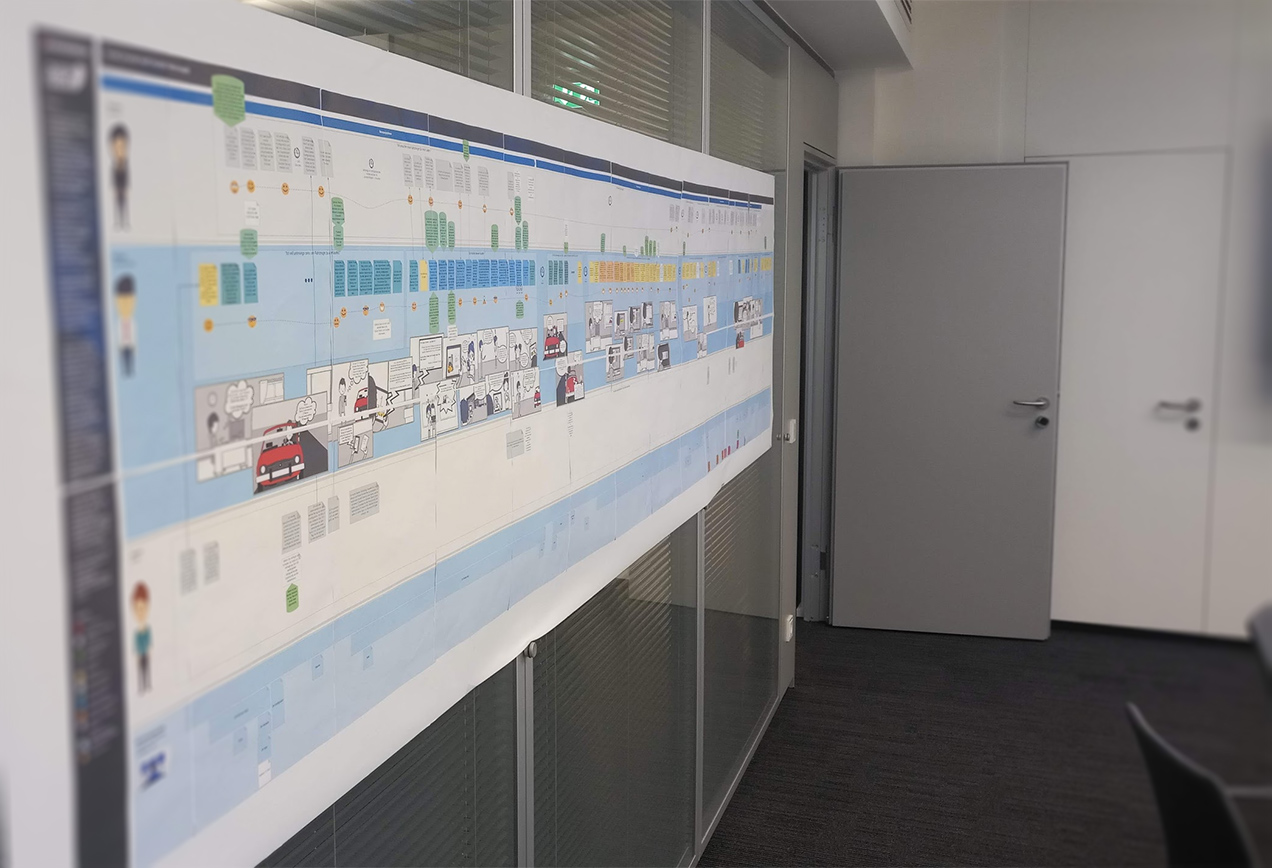
Framing
At Salesforce, I participated in a project with a global intralogistics solution provider for several months. Our task was to analyze and enhance the current sales processes from a UX perspective, focusing on everyone involved, including the customer. Through numerous interviews and field studies at various locations, we aimed to validate our findings with the users.
Outcome
- Comprehensive analysis of the current sales processes
- Identification of significant optimization opportunities
- Development of a user-centered TO-BE journeyIterative refinement of the main sales process with user feedback
- Creation of a visual storyboard and an animated version of the new sales process
- Enhanced focus for sales personnel on core selling activities
Approach
We began by conducting extensive interviews and field studies to understand the existing sales processes and gather user insights. The focus was on identifying optimization opportunities to put the user at the center of everything. Our goal was to enable Jungheinrich’s sales personnel to focus on what they do best: selling. The TO-BE journey for the main sales process underwent several iterations with user involvement to ensure maximum quality. To communicate the new sales process effectively, we visualized the entire journey in a storyboard, which was also animated and set to music. The outtakes from this process were particularly enjoyable and engaging.
Learnings
- The importance of thorough user research and validation in process optimization
- The value of iterative design and user feedback in refining concepts
- The effectiveness of visual storytelling in communicating process changes
- The benefit of focusing on core activities to enhance sales performance
- The positive impact of engaging and creative presentation methods in user adoption
Impressions



